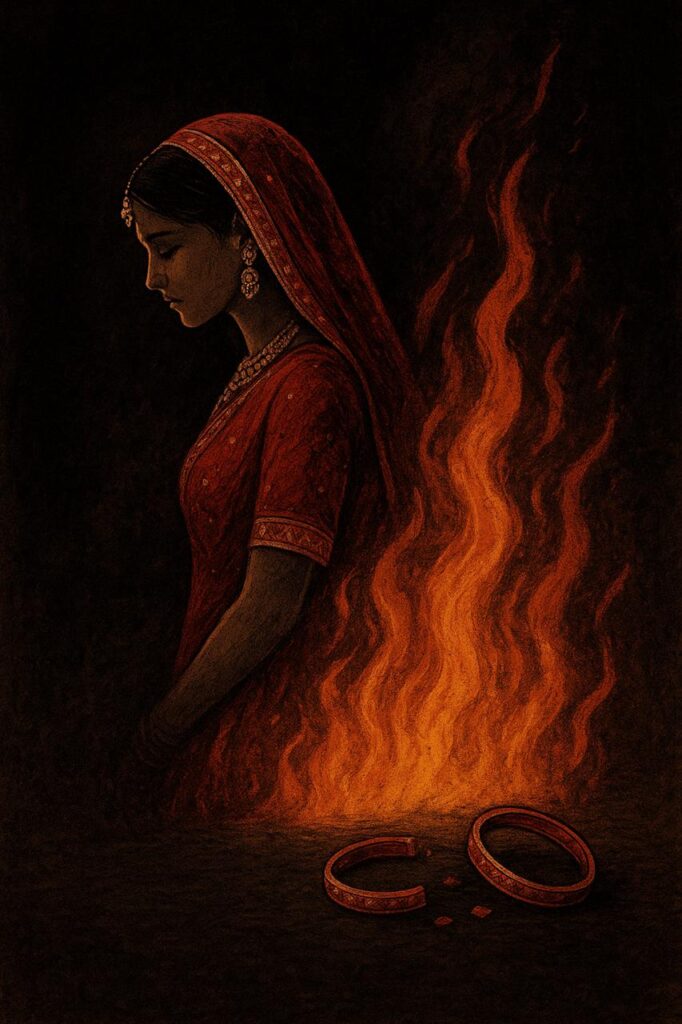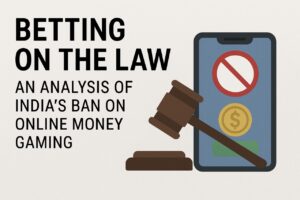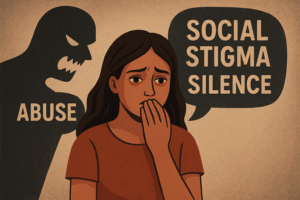
The sudden and horrible death of Nikki has left society shocked, sparking debates across drawing rooms, news channels, and court corridors. A young life lost under circumstances that remain unclear is not just a matter of headlines; it is a matter of truth, justice, and human dignity. At such a stage, when investigations are ongoing, it is crucial to approach the case with an open mind. As lawyers often say, “Suspicion, however strong, cannot replace proof.” Yet, suspicion often gives rise to multiple narratives.
In this case, three primary possibilities seem to have captured public attention: the role of her husband, the possibility of suicide, and the questionable conduct of her sister. Let us scrutinize each angle without reaching premature conclusions, but with an honest attempt to gain a deeper understanding.
- The Husband’s Angle
Nine years of marriage is not at all a short journey. Any relationship that spans nearly a decade carries with it countless moments of joy, struggle, adjustment, and conflict. In many tragic cases involving women, especially in India, the husband is the first to fall under suspicion. Legally, provisions like Section 498A IPC/ Section 85 BNS (cruelty by husband or his relatives) and Section 304B IPC/ Section 80 BNS (dowry death) are often invoked when a married woman dies under unnatural circumstances.
In Nikki’s case, the possibility that her husband, Vipin, and her in-laws may have played a role cannot be overlooked. Reports suggest frequent domestic disagreements, and after nearly nine years of marriage, whispers of dowry-related tensions and household disputes have surfaced. Some media accounts also hint at Vipin’s alleged closeness with another woman, raising uncomfortable questions about whether marital discord ran deeper than it appeared. The CCTV camera footage showing Vipin standing outside his home minutes before the incident. However, Nikki’s elder sister Kanchan alleged in her FIR that Nikki was deliberately set ablaze by Vipin, his mother Daya, father Satveer, and brother Rohit after being beaten. This can be a pre-planned act, possibly linked to marital strain or family pressures. While nothing is conclusively proven, the combination of strained relations and the tragic end inevitably leads investigators and society to view the case through the lens of a suspected murder rather than an unfortunate accident.
In Indian society, where patriarchal pressures sometimes weigh heavily, women have historically faced violence within their own homes. The law rightly presumes that when a woman dies within seven years of marriage under suspicious circumstances, the husband and in-laws face greater scrutiny. Though here the marriage had crossed nine years, one cannot entirely rule out the possibility of continued domestic strain. This does not wash away suspicion. Reports say there were frequent arguments at home about dowry, about Nikki’s wish to reopen her beauty parlour, and even about her habit of making Instagram reels. These may sound small issues, but in a strained marriage, they can grow into serious disputes. If cruelty is proven, Vipin may still face liability under Section 302 IPC/ Section 103 BNS (murder), Section 306 IPC/ Section 108 BNS (abetment of suicide), or Section 498A IPC/ Section 85 BNS(cruelty).
But here lies the key: possibility is not proof. While the husband may appear as the most likely suspect, our justice system does not convict on likelihood. It convicts on evidence. Until clear proof emerges, calling him guilty would be unfair and legally untenable.
2. The Suicide Angle
Another perspective is that Nikki may have taken her own life. Mental health struggles, invisible to outsiders, often remain hidden even from family. In a society where women are constantly judged, whether for their marriage, appearance, or choices, internal battles can become overwhelming.
If this was a suicide, it complicates the narrative. On one hand, it raises questions about what Nikki endured in silence. Was she struggling emotionally due to marital discord? Or was there another personal battle no one around her recognised? On the other hand, it forces us to reflect on how quickly we label someone else as the culprit.
Suicide is not just an act; it is often the culmination of deep emotional suffering. Without understanding the internal story of Nikki’s life, it would be unfair to draw conclusions. Reports of CCTV visuals allegedly showing her in distress before the incident make this angle worth considering.
This is why law and society must be read carefully. We cannot criminalise grief or turn every tragedy into a crime unless supported by evidence. The possibility of suicide, however painful, must remain on the table until ruled out by investigation.
3. The Sister’s Angle
Perhaps the most disturbing element in this case is the role of Nikki’s sister. Reports suggest that when Nikki was engulfed in flames, her sister was present, and instead of intervening, she allegedly recorded a video.
To any human mind, this defies logic. Why would someone record such a horrifying scene instead of rushing to save a loved one? Of course, explanations exist, shock, panic, or even an instinct to preserve evidence for later. Human behaviour in crisis is unpredictable. But to stand by with a camera while one’s sister burns is an act that cannot be brushed aside casually.
This raises a third angle: was there an element of force, neglect, or silent consent? Could the sister’s actions have contributed, if not to the act itself, then at least to its tragic conclusion? The video will likely be a central piece of evidence before the court, as it not only documents the incident but also reflects the choices made in those critical moments.
Again, we must be cautious. Allegations cannot replace facts. But the sister’s conduct remains a troubling factor that the investigation cannot ignore.
4. Could It Be a Planned Trap? – The Untold Possibility
A further angle that deserves consideration is the possibility of a premeditated conspiracy. It may be argued that Nikki herself, in a moment of deep frustration, devised a plan to implicate Vipin and his family an act of calculated pressure which spiraled beyond her control. Her words, “Mujhe bacha lo, mujhse galti ho gayi,” soon after the incident, hint at regret for a deliberate but miscalculated step.
Equally, one cannot rule out that Nikki and her sister together laid this trap a carefully thought-out scheme to corner Vipin by creating circumstances that would naturally draw legal suspicion towards him and his family. Her sister’s shocked utterance, “Ye kya kar liya,” may well reflect that the plan went far beyond what was intended.
Nonetheless, this line of reasoning remains only a possibility. Matrimonial deaths are complex, and while cruelty cannot be discounted, nor can the chance of a deliberate conspiracy be ignored. Ultimately, only a thorough trial can unravel whether Nikki was indeed a victim or whether she herself, alone or with her sister, wove the net that consumed her life.
The Child’s Voice- Evidence or Emotion?
Nikki’s child stands as the most delicate witness in this entire case. Under Section 118 of the Indian Evidence Act/ Section 6 BSA, even a child is competent to testify if the court believes he or she can understand and answer rationally. Yet, the truth remains that young children are highly impressionable and can be tutored. So while the child’s words carry immense emotional weight, in law, they cannot, by themselves, form the sole basis for conviction without corroborative evidence.
Other Puzzling Layers
- The Mystery Girl: There are reports that Vipin was seen at a disco with another woman the night before the incident. Was this infidelity? Or just coincidence? We don’t know.
- Medical Confusion: First hospital notes spoke of a “gas cylinder blast,” later accounts shifted towards intentional harm. This contradiction must be resolved.
- NCW’s Intervention: The National Commission for Women has demanded a report from the Uttar Pradesh police within three days, showing how seriously the case is being taken at the national level.
Every new fact seems to open another door, rather than closing one.
A Larger Reflection
Beyond the angles of husband, suicide, sister, and planned trap lies a bigger truth: society’s rush to judgment. Each time such a case arises, social media turns into a courtroom and the public into judges. Yet justice is not built on emotions; it is built on evidence, testimony, and due process.
Nikki’s case reminds us of the delicate balance our legal system seeks to maintain. Yes, we must hold the guilty accountable. But we must also guard against the injustice of branding someone guilty without proof.
Conclusion: Trust in Justice
At the end of the day, one truth stands firm, a young woman has lost her life, and justice must be served. Whether it was the husband, a suicidal act, or the sister’s negligence, only a fair investigation and trial can uncover the real story.
As citizens, our role is not to prejudge but to support the process. As lawyers, our role is to remind society that justice delayed is painful, but justice rushed is dangerous.
In Nikki’s case, let us not become hasty judges. Instead, let us place our faith in the system that has been built, brick by brick, to protect fairness. For at the end of the day, justice is not just about punishing the guilty, it is also about ensuring that the innocent are never wrongly condemned.
-By Ritika Agarwal


